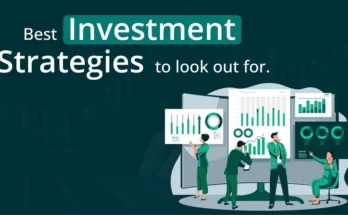Knowing the number game is just the starting point in the very complex world of finance. The real potential value lies in how to interpret those numbers into an action plan that brings along long-term success. This is where the Chartered Financial Analyst comes, providing professionals with expertise and information needed to transform raw data into powerful, future-oriented strategies. Disciplined and data-driven, it breathes life into numbers to provide insights needed by individuals, businesses, and institutions in shaping their financial futures.
The CFA Program: Building the Foundation for Strategic Success
The CFA program is probably one of the most respected and rigorous credentials in finance. It spans three levels of exams-from the basics of financial reporting and corporate finance all the way to portfolio management and ethical decision-making. CFA candidates do not memorize lists of formulas nor analyze balance sheets; instead, they learn to assimilate those data points into a rich understanding of the world of finance.
The CFA is less about number crunching and more about interpretation. It is about putting numbers together with a qualitative understanding of markets, economies, and investor behavior to transform raw data into a narrative. Strategy for risk, finding an opportunity, and meeting long-term goals all rest on it.
Turning Numbers into Strategic Insights
The first and most obvious advantage of using a CFA lies in the ability to transform numbers into strategic decisions. This process can be illustrated by the following:
Financial Analysis: It all starts with the financial well-being of an investment or a company. CFAs are involved in digging deep into financial statements, covering a good amount of key metrics such as revenue growth, profitability, and levels of debt. Their approach, however, is not just analyzing these numbers but also puts them in perspective—comparing these numbers to their industry, the overall economy, and likely future patterns. Such analysis forms the base of every strategic decision.
Valuation and Forecasting: A CFAS can estimate the intrinsic value of investments with methods like DCF analysis and relative valuation. This is because such an ability to come up with very precise pictures of what is going to happen helps them identify if something is overvalued or undervalued, hence enabling investors to make money decisions aligned with their financial objectives. Be it in equities, fixed income, or real estate, CFAs know how to translate the numbers to a forward-looking strategy that seeks optimal returns.
Hence, the risk component of any investment is an important area for CFAs. The ability to measure and consequently minimize it is taught to CFAs. Advanced technical risk management techniques help in understanding downsides in the form of volatility in the market, risks due to geopolitical reasons, or interests. Such an analysis allows CFAs to design strategies that balance between risks and rewards and can really sustain portfolios if there is uncertainty. By measuring and managing risk, CFAs turn financial uncertainty into a controlled, manageable aspect of their strategy.
Portfolio management is one of the most critical areas where CFAs make numbers into strategy. They do not merely choose the investments based on the performance of that particular investment; instead, they see how that particular asset behaves within the portfolio along with others. Applying principles of diversification and asset allocation helps CFAs create portfolios with reduced risk and maximum return. The strategy is always monitored and adjusted to ensure that the portfolio reflects and responds to changes in the investor’s goals and changing market environment.
Behavioral Finance: CFAs also possess the ability to understand the psychology of investors and the market. It is realized that emotions, mood, and unreasoning do govern the markets more than the figures and the reasons. In this regard, by incorporating insights from behavioral finance, CFAs can predict the swings in the market, prevent emotional decisions, and steer clients through stormy weather with strategic serenity.
Real-Life Application: Shaping Financial Futures
The real value of a CFA is its ability to find a way to render theories into realities. Imagine that an institutional investor is looking for his way through the uncertain nature of the global market. First and foremost, the CFA will go ahead and determine the outlook of economic data, corporate earnings, and geopolitics risks. From this, he’ll build a robust, diversified portfolio that minimizes systemic risks while positioning the portfolio for growth. This strategic approach by the CFA ensures that a client’s investment strategy gets aligned with the investor’s long-term goals; these may include achieving capital appreciation, generating income, or minimizing some level of risk.
The CFA will first assess the individual investor’s current financial situation and his or her future income needs or risk tolerance. And, with data-driven methods, the CFA would design a retirement strategy that maximizes investment growth while balancing risk and liquidity needs. This could involve tax-efficient strategies, diversification across asset classes, and periodic portfolio rebalancing-all customized to the unique goals of the investor.
Conclusion: Strategy with a Purpose
CFA programs are more than a badge of honor; they’re rigorous training for financial professionals transforming numbers into actionable strategies. Understand the numbers, understand the risks, incorporate behavioral insights, and CFAs build strategies to not just react to the present but be built for long-term success. Whether it’s managing a portfolio or guiding a business through financial decisions, CFAs transform financial analysis into a roadmap of what lies ahead.
In a world where markets are becoming increasingly volatile and complex, only the CFA approach can provide that strategic edge. Numbers don’t just mean reading statistics; it’s getting to use them to create the future, make data-driven decisions in building wealth, preserving assets, and all aligning with long-term financial goals. The CFA approach is a blueprint for success for anyone serious about transforming their financial future.



